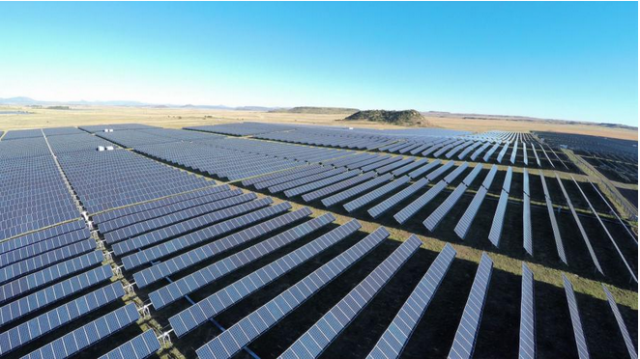 South Africa plans to integrate 8GW of wind and solar energy into the grid each year
South Africa plans to integrate 8GW of wind and solar energy into the grid each year
The global energy transition is witnessing impressive progress in renewable energy, June 2, 2023, according to the South African Presidential Climate Council (PCC), which said that South Africa’s current rollout of solar and wind power to increase its share of the country’s energy mix from 7% to 40% by 2030 is the fastest way out of the electricity crisis and the fastest way to build the energy sector South Africa needs to uphold its global cheapest option for upholding its global climate commitments.
The PCC, which was established in 2020 by South African President Cyril Ramaphosa to advise on issues such as a just energy transition, released a series of recommendations on June 1 for South Africa’s electricity planning. the PCC said South Africa aims to integrate at least 8GW of wind and solar energy into the grid each year for the next two to four years to address the power crisis. About 2.5GW of new renewable energy projects are now registered with South Africa’s national energy regulator. Experience shows this target is achievable in the first three months of 2023. Ultimately, by 2030, South Africa will need an additional 50 to 60 GW of renewable energy, according to Steve Nicholls, head of mitigation at PCC and climate change advisor to the National Business Initiative. Nicholls (Steve Nicholls) said that this would bring the share of renewable energy in South Africa’s energy mix to about 40%. According to the Council for Scientific and Industrial Research, coal-fired power generation will account for about 80 percent of electricity generation and renewable energy (excluding hydropower) will account for 7 percent by 2022.
The PCC drafted the proposals in response to comments from the Department of Mineral Resources and Energy on revising the Integrated Resource Plan (IRP) 2019, which the department intends to submit to cabinet in the second half of 2023.IRP 2019 sets out South Africa’s power procurement plan to 2030, calling for the retirement of about 12GW of coal-fired generation by 2030 and the expansion of the same timeframe 18GW of private sector-led renewables, but the PCC’s proposal suggests that 18GW of renewables will not meet South Africa’s energy needs by 2030. In its recommendations for the revised plan, the PCC calls for the IRP to be able to maximize the use of renewable energy in the grid.
Commenting on the South African government’s plan to extend the life of old coal-fired power stations as an emergency measure to fill the growing power supply gap, the PCC said that in light of South Africa’s immediate energy crisis, postponing the decommissioning date of end-of-life coal and coal-fired power stations for the next year or two would not have a significant impact on South Africa’s climate commitments. However, extending the closure of coal-fired power plants beyond two years would put South Africa’s ability to meet its carbon reduction targets at risk.
In its revised nationally owned contribution (NDC) presented at the international climate change conference COP26, South Africa committed to reducing carbon emissions to a target range of 350 million tons to 420 million tons of carbon dioxide equivalent by 2030, targeting current CO2 emissions reductions of about 20-33 percent.
Nicholls said the implementation of PCC’s power planning proposals will put South Africa on track to meet the NDC requirements. And one of the biggest constraints to accelerating the rollout of renewable energy is the current restrictions on grid access in certain parts of South Africa. In order to meet the 50GW to 60GW renewable energy target, South Africa must implement Eskom’s transmission development plan, under which some R130 billion will be needed to build 100 new substations and 8,500km of transmission lines by 2030, and PCC has yet to receive a formal response from the government on these proposals.




